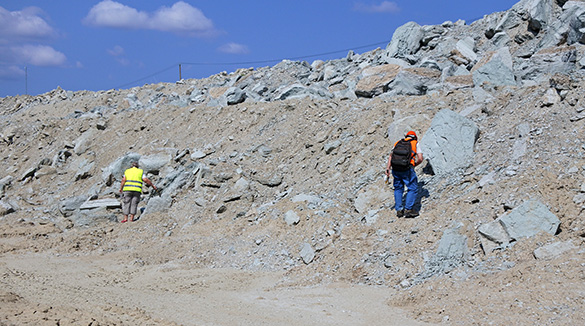 Tartu, Estonia — Today Bill and I had a spectacular geology and culture field trip in northeastern Estonia. As you can see in the images, the weather was excellent, if a little warm. Our Estonian hosts took us from Tartu to several places north and east to the border with Russia. Our fieldwork in an oil shale quarry is shown above, but first our journey there —
Tartu, Estonia — Today Bill and I had a spectacular geology and culture field trip in northeastern Estonia. As you can see in the images, the weather was excellent, if a little warm. Our Estonian hosts took us from Tartu to several places north and east to the border with Russia. Our fieldwork in an oil shale quarry is shown above, but first our journey there —
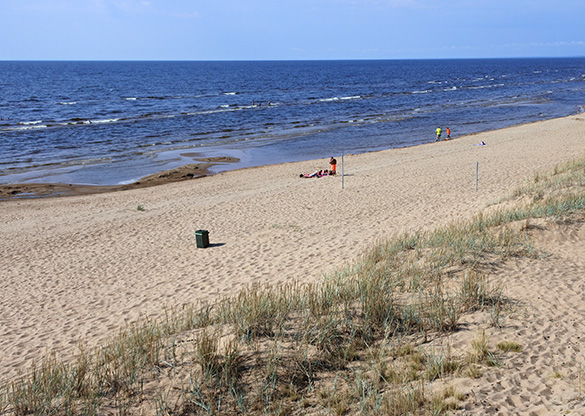 Lake Peipsi (or Lake Peipus) is near Tartu. It is one of the largest freshwater lakes in Europe, with the Russian border running down its center. We stopped briefly for this view. It looks like one of North America’s Great Lakes from here. There is much history along these shores.
Lake Peipsi (or Lake Peipus) is near Tartu. It is one of the largest freshwater lakes in Europe, with the Russian border running down its center. We stopped briefly for this view. It looks like one of North America’s Great Lakes from here. There is much history along these shores.
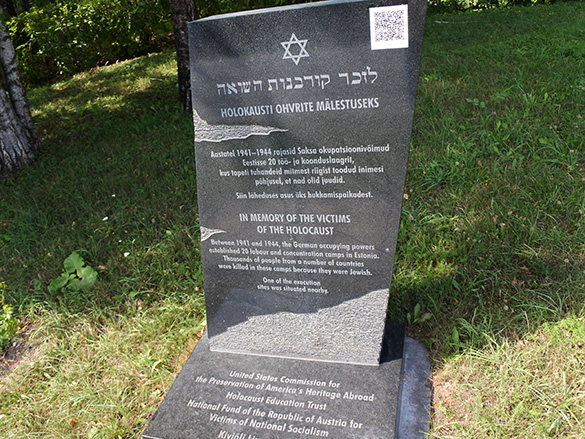 This is the Kiviõli Concentration Camp Holocaust Memorial near our collecting site today. The 20th century history of this region, especially during World War II, is notably grim and brutal. Relatively little has been published on the German concentration camps in Estonia.
This is the Kiviõli Concentration Camp Holocaust Memorial near our collecting site today. The 20th century history of this region, especially during World War II, is notably grim and brutal. Relatively little has been published on the German concentration camps in Estonia.
 This is the oil shale mine we visited near Põhja-Kiviõli in northern Estonia. The oil shales, in the form of kukersite, are the brown units in the top half of the outcrop. The shales are dug from these pits and then separated from the limestones, which appear light gray. The pits fill quickly with water, so there are massive pumps continually working nearby.
This is the oil shale mine we visited near Põhja-Kiviõli in northern Estonia. The oil shales, in the form of kukersite, are the brown units in the top half of the outcrop. The shales are dug from these pits and then separated from the limestones, which appear light gray. The pits fill quickly with water, so there are massive pumps continually working nearby.
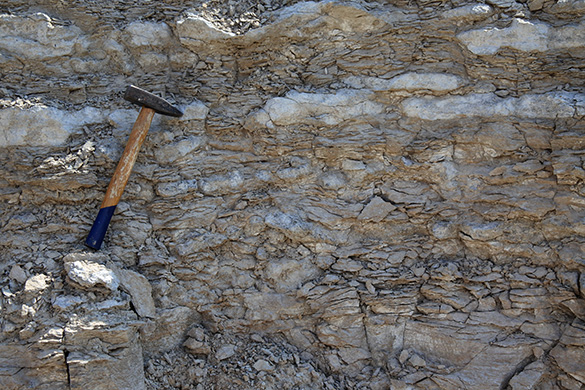 A closer view of an oil shale outcrop. These units are Late Ordovician in age (Sandbian) and nearly unique to Estonia. They are very rich in organic material — up to 55% of the rock. The oil shales are used in a variety of ways for energy and petroleum products.
A closer view of an oil shale outcrop. These units are Late Ordovician in age (Sandbian) and nearly unique to Estonia. They are very rich in organic material — up to 55% of the rock. The oil shales are used in a variety of ways for energy and petroleum products.
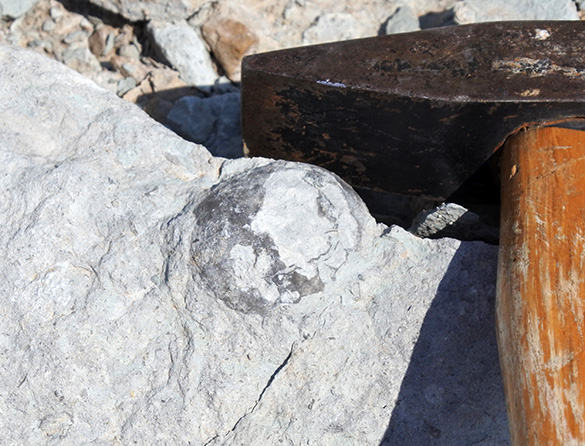 Finding specimens of the spherical rhombiferan echinoderm Echinosphaerites was one of our goals for this trip. Here is one in limestone. The best are those that are in the oil shale because they pop free of the matrix. We didn’t find very many, though.
Finding specimens of the spherical rhombiferan echinoderm Echinosphaerites was one of our goals for this trip. Here is one in limestone. The best are those that are in the oil shale because they pop free of the matrix. We didn’t find very many, though.
 Giant bryozoans were surprisingly common in the oil shales. This is the base of a large trepostome. We found many of these bryozoans with beautiful borings. It was a good collecting site.
Giant bryozoans were surprisingly common in the oil shales. This is the base of a large trepostome. We found many of these bryozoans with beautiful borings. It was a good collecting site.
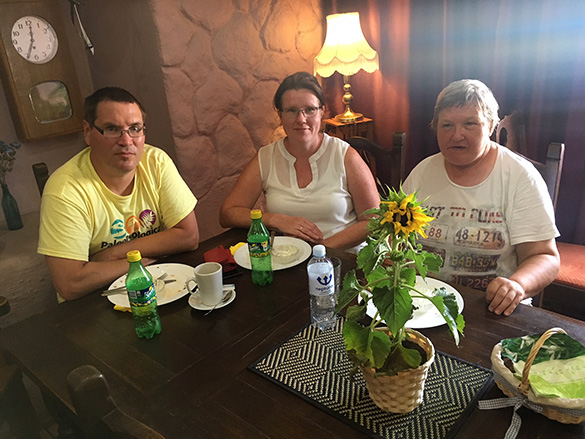 Here are our delightful Estonian hosts at lunch following fieldwork. From left to right: Olev Vinn (a colleague since 2006), Ingrid Vinn, and Mare Isakar.
Here are our delightful Estonian hosts at lunch following fieldwork. From left to right: Olev Vinn (a colleague since 2006), Ingrid Vinn, and Mare Isakar.
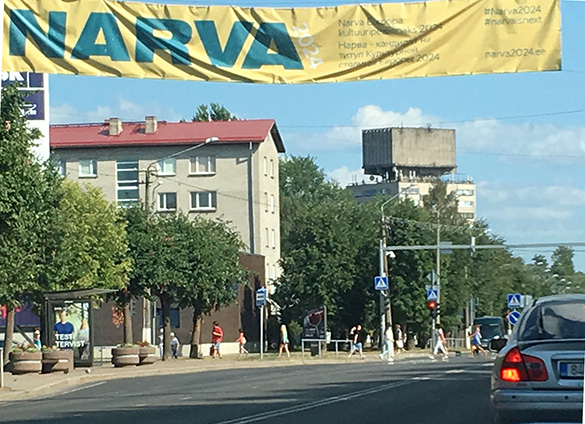 Much to our surprise we were able to go to the storied easternmost Estonian city of Narva. This was very much a treat. Narva sits along the Narva River, which is the border with Russia. The city has a high concentration of Russian-speakers and a distinct Estonian-Russian culture. Its history has been, needless to say, complex even to present times.
Much to our surprise we were able to go to the storied easternmost Estonian city of Narva. This was very much a treat. Narva sits along the Narva River, which is the border with Russia. The city has a high concentration of Russian-speakers and a distinct Estonian-Russian culture. Its history has been, needless to say, complex even to present times.
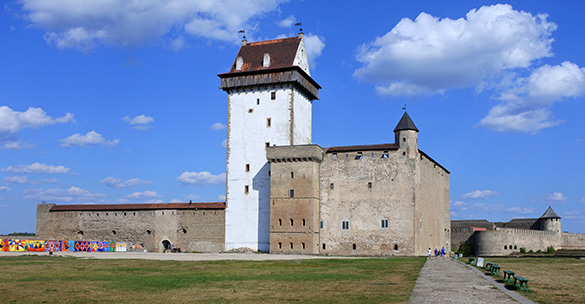 This is Hermann Castle, also called Narva Castle, the focus of our visit. Hermann Castle is the blocky, high structure. To the right is visible another castle on the other side of the Narva River (see below).
This is Hermann Castle, also called Narva Castle, the focus of our visit. Hermann Castle is the blocky, high structure. To the right is visible another castle on the other side of the Narva River (see below).
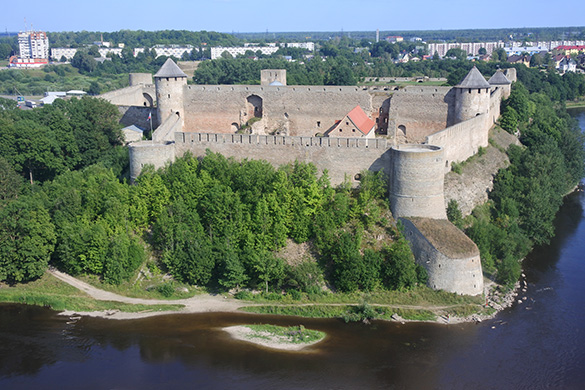 This is that Russian castle opposite the Hermann Castle on the castle on the other bank of the Narva River. It is the Ivangorod Fortress. It makes for quite a striking boundary at the western edge of Russia.
This is that Russian castle opposite the Hermann Castle on the castle on the other bank of the Narva River. It is the Ivangorod Fortress. It makes for quite a striking boundary at the western edge of Russia.
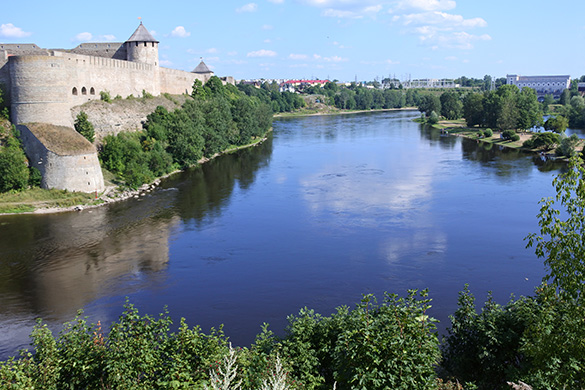 The Narva River between the two castles, looking upstream. The Ivangorod Fortress is on the left. This is effectively the boundary between East and West in Europe.
The Narva River between the two castles, looking upstream. The Ivangorod Fortress is on the left. This is effectively the boundary between East and West in Europe.
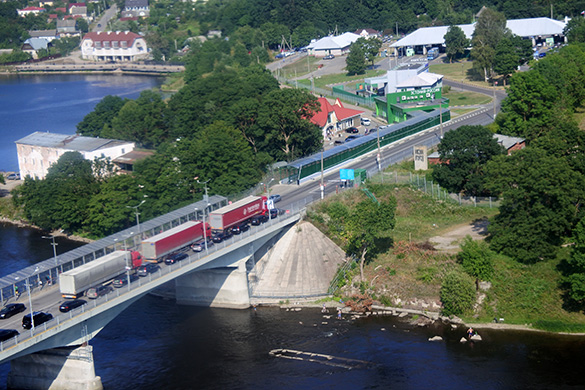 The Narva border crossing bridge between Estonia on the left and Russia on the right. This is the view from the top of the Hermann Castle. At this point my phone gave me a message: “Welcome to the Russian Federation”.
The Narva border crossing bridge between Estonia on the left and Russia on the right. This is the view from the top of the Hermann Castle. At this point my phone gave me a message: “Welcome to the Russian Federation”.
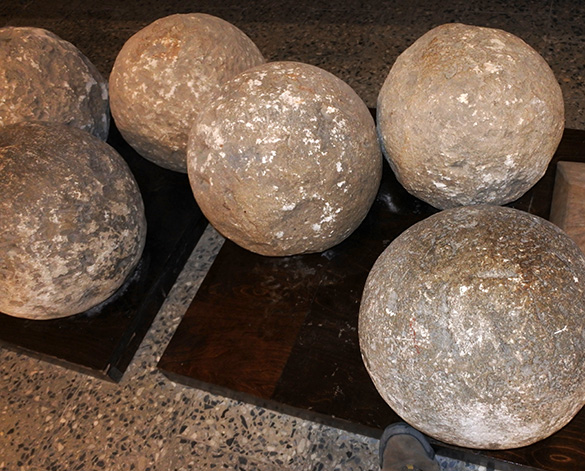 The interior of the Hermann Castle is a museum. I thought these stone cannon balls were geologically interesting, considering that earlier this summer I saw their equivalents in Wales. Note my foot for scale.
The interior of the Hermann Castle is a museum. I thought these stone cannon balls were geologically interesting, considering that earlier this summer I saw their equivalents in Wales. Note my foot for scale.
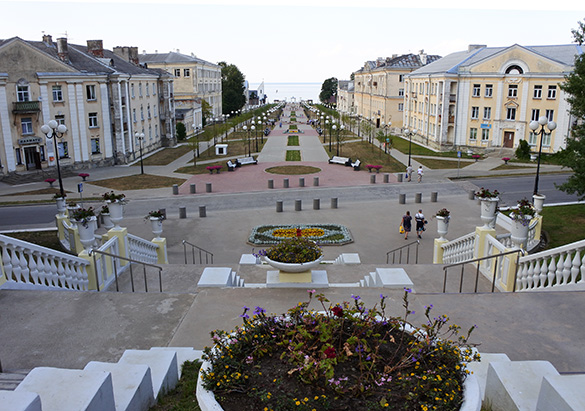 On the way back to Tartu, we visited the town of Sillamäe on the Baltic coast. During Soviet times factories in Sillamäe extracted uranium oxides from local oil shales and then from other ores mined throughout the Soviet Empire. Because of the high concentration of scientists and engineers, this town was built with, shall we say, higher architectural and aesthetic standards than the usual Soviet constructions. It was a “closed town” forbidden to foreigners or even most Estonians.
On the way back to Tartu, we visited the town of Sillamäe on the Baltic coast. During Soviet times factories in Sillamäe extracted uranium oxides from local oil shales and then from other ores mined throughout the Soviet Empire. Because of the high concentration of scientists and engineers, this town was built with, shall we say, higher architectural and aesthetic standards than the usual Soviet constructions. It was a “closed town” forbidden to foreigners or even most Estonians.
 This is a 1987 statue in Sillimäe celebrating its atomic achievements. By then this town produced almost 100,000 tons of uranium oxides for Soviet nuclear weapons and energy plants. It all stopped in 1989, and when Estonia reclaimed the area two years later there were serious contamination problems to solve. [Update: Cheryl Rofer, Los Alamos National Laboratory (retired), added a comment and a link to her story about the clean-up: Averting a Baltic Sea Disaster. It is an excellent read!)
This is a 1987 statue in Sillimäe celebrating its atomic achievements. By then this town produced almost 100,000 tons of uranium oxides for Soviet nuclear weapons and energy plants. It all stopped in 1989, and when Estonia reclaimed the area two years later there were serious contamination problems to solve. [Update: Cheryl Rofer, Los Alamos National Laboratory (retired), added a comment and a link to her story about the clean-up: Averting a Baltic Sea Disaster. It is an excellent read!)
What a rich trip this was. Thank you again to Olev, Ingrid and Mare.



What small feet you have Professor Wilson…
Mere Puiestee in Sillimäe is looking good! Here’s the story of my participation in the cleanup, which was completed in 2009.
With pictures and some geology!
https://lab2lab.stanford.edu/e-archive/welcome-e-archive/beyond-lab-lab/cheryl-rofer/averting-baltic-sea-disaster
Dear Cheryl: Thank you very much for the link to your story! It is so good I linked it in the post as well. Thank you for your service at a critical time in a critical place.
Small feet are very fashionable these days.